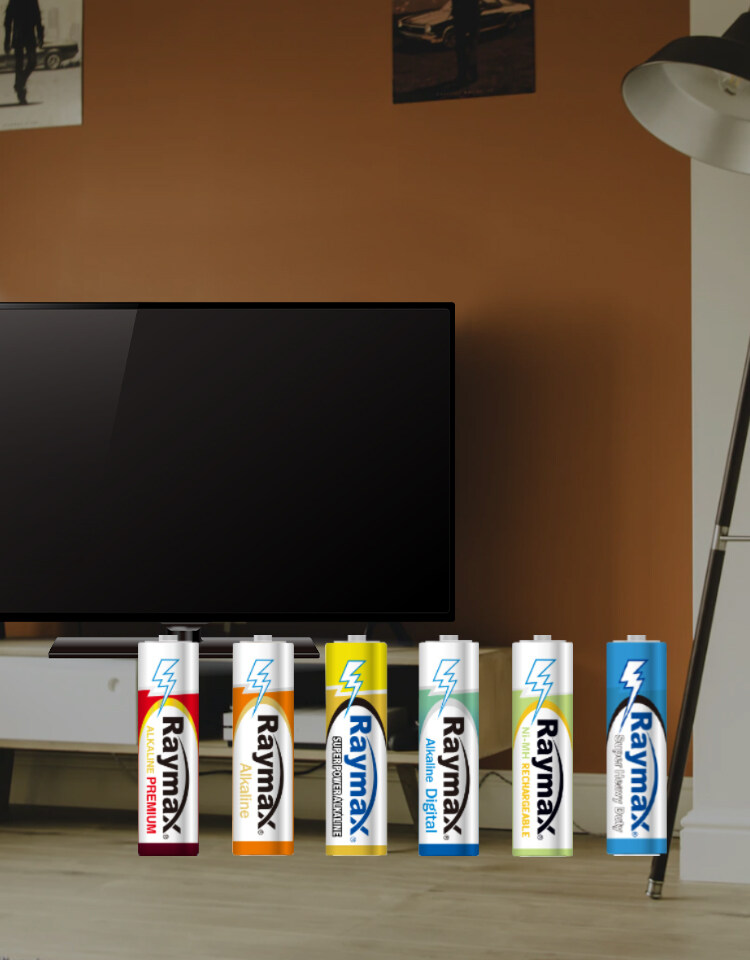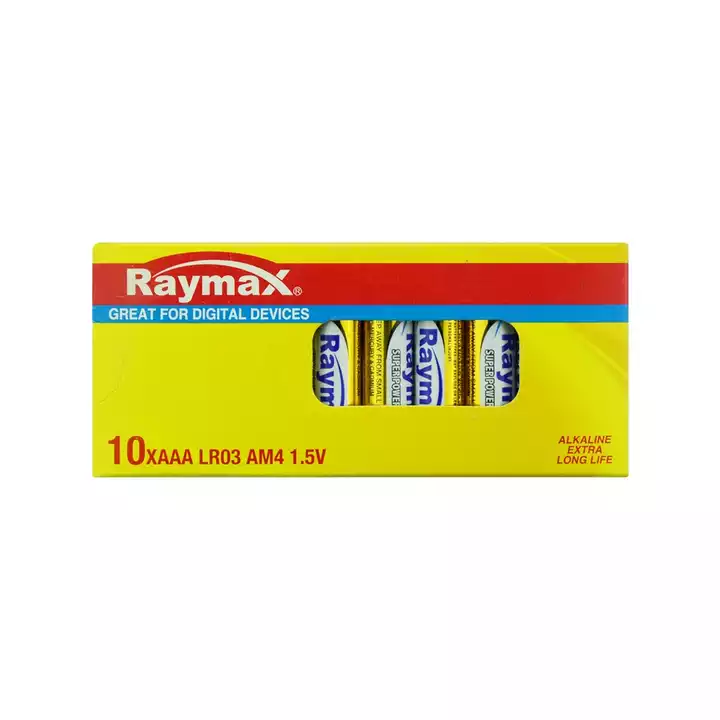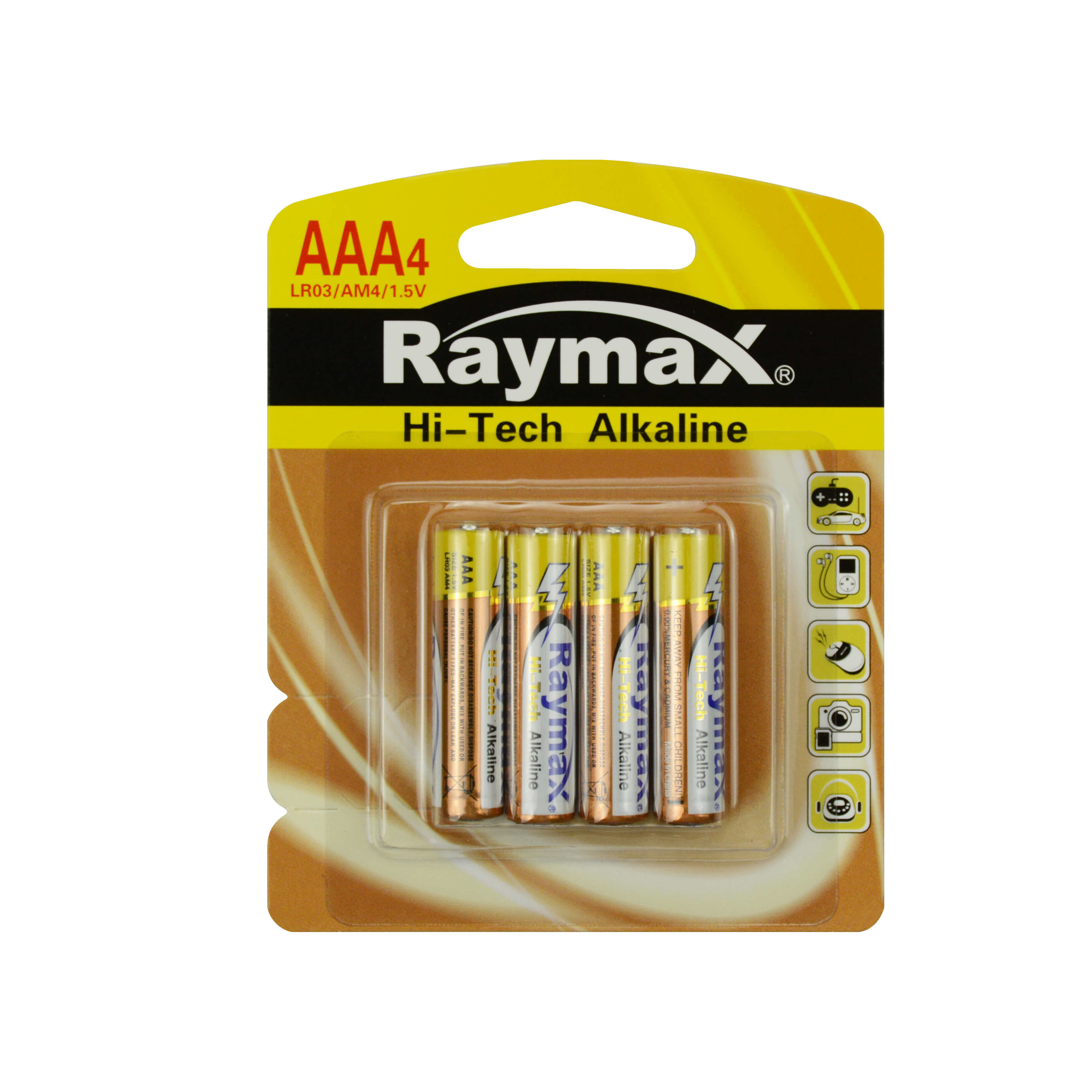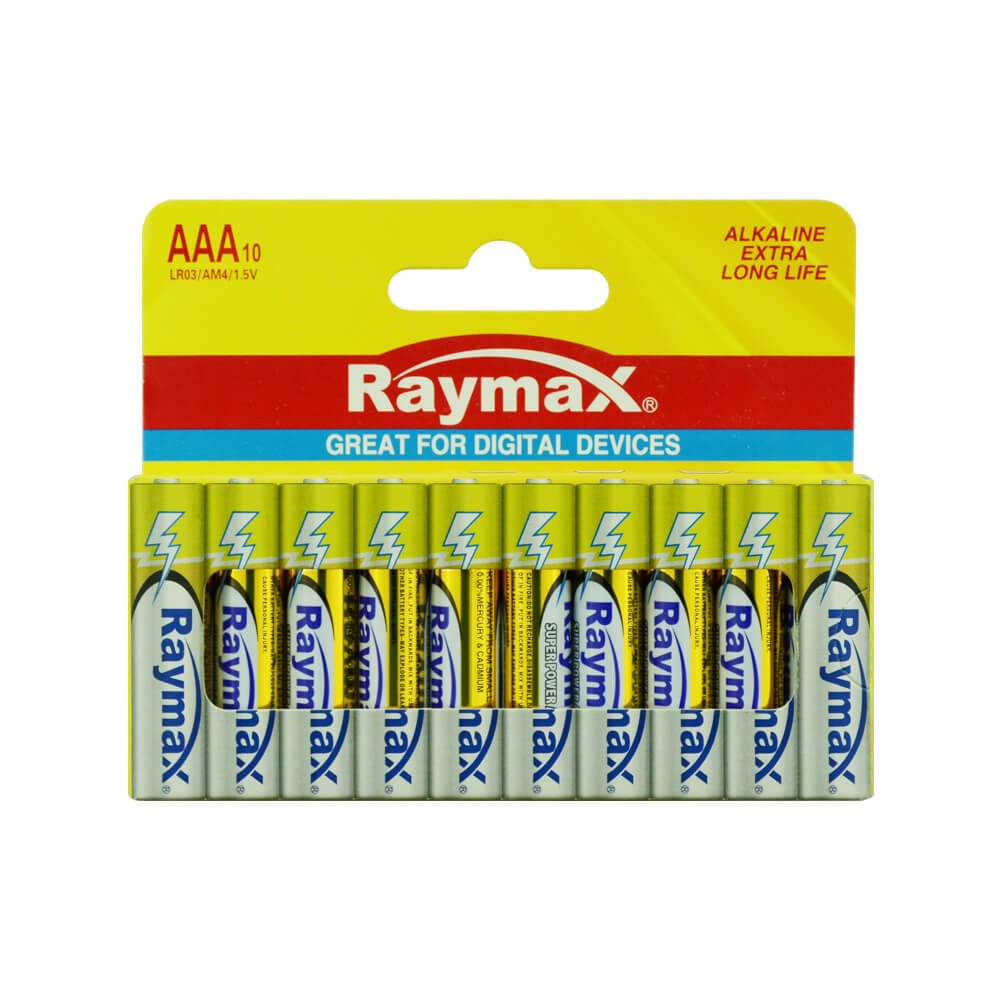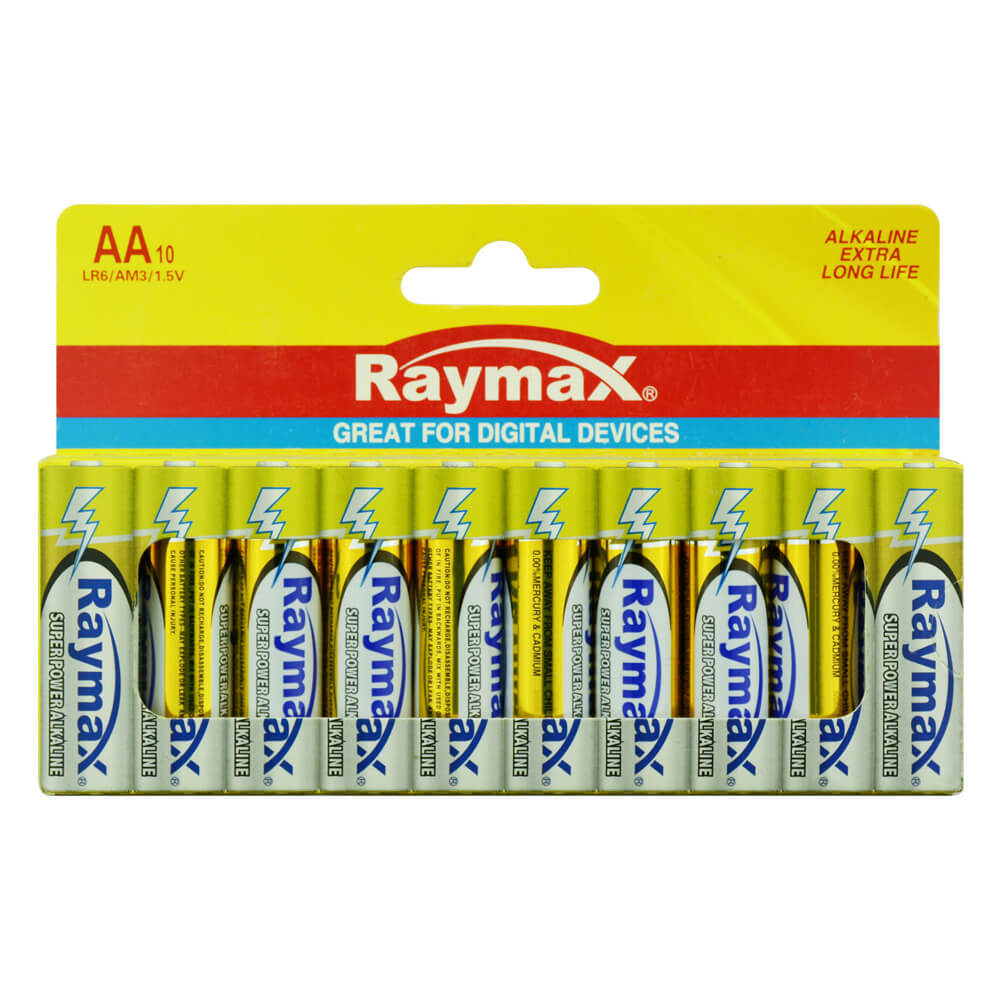Email format error
Email cannot be empty
Email already exists
6-20 characters(letters plus numbers only)
The password is inconsistent
Email format error
Email cannot be empty
Email does not exist
6-20 characters(letters plus numbers only)
The password is inconsistent

Raymax paper box LR03 AAA 1.5V alkaline battery 10pcs value pack
Zinc and manganese dioxide serve as the electrode materials in alkaline batteries, which are disposable batteries. The alkaline electrolyte utilized is sodium hydroxide or potassium hydroxide. These batteries are more energy dense and leak-proof than carbon zinc batteries, and they also have a constant voltage.
Overview - The Raymax LR03 AAA 10count Alkaline Battery
The 10 pieces of Raymax AAA LR03 alkaline batteries offer you the greatest performance and lengthy usage. Their high quality, long lifespan, and dependable performance are guaranteed by their 1.5V voltage and 1150mah capacity. These batteries are ideal for a variety of home necessities, including remote controls, digital cameras, computer peripherals, and more!
About This Item-Wholesale lr03 AAA 1.5v Battery Bulk Pack
|
Product Item |
Raymax LR03 AAA 10count alkaline battery |
|
Model |
AAA LR03 |
|
Shape |
cylindrical |
|
Voltage |
1.5V |
|
Capacity |
1150mah |
|
Shelf Life |
5 Years |
|
HS Code |
850610.1210 |
|
Certification |
SGS, IEC,MSDS,2006/66/EC, ROSH, JIS |
|
Warranty |
5 years |
|
Battery Type |
Alkaline |
Product Structure of Alkaline Battery
Components of Alkaline Battery
1. Steel shell
2. Other important accessories: Negative component- primarily made up of a sealing ring, a copper needle, and a base.
3. Steel can
4. Separator paper
5. Conductive graphite
6. Cathode mix
7. Conductive graphite
8. Cathode mix
9. Collector nail
10. Sealing plug
11. Sealant
12. Negative cap
Details Introduction:
The battery’s body is made of a hollow steel drum. This drum contains all the battery’s materials and also serves as the cathode.
The battery’s positive terminal protrudes from the top of this drum.
The inner peripheral surface of the empty cylindrical drum is moulded with fine-grained manganese dioxide (MnO2) powder mixed with coal dust. This moulded mixture serves as the alkaline battery’s cathode mixture.
A paper separator is placed on the inner surface of the thick layer of cathode mixture. Inside this paper separator, the central space is filled with zinc powder and a potassium hydroxide electrolyte.
The zinc acts as an anode, and its powder form expands the contact surface.
The electrolyte is held in place between the cathode (MnO2) and the anode by a paper separator soaked in potassium hydroxide (Zn).
To collect the negative charge, a metallic pin (preferably made of brass) is inserted along the central axis of the alkaline battery. This is known as a negative collector pin. This pin comes into contact with a metallic end-sealed cap.
A plastic cover just inside the Metallic end sealed cap electrically separates the positive steel drum and negative end cap of an alkaline battery.
Frequently Asked Questions on Alkaline Batteries
What are alkaline batteries?
Alkaline batteries are disposable batteries with electrodes made of zinc and manganese dioxide. Potassium or sodium hydroxide is the alkaline electrolyte used. These batteries have a constant voltage and are more energy dense and leak resistant than carbon zinc batteries.
Why is alkaline battery named so?
Primary batteries are alkaline batteries. The alkaline battery gets its name from its alkaline electrolyte of potassium hydroxide, as opposed to the zinc-carbon batteries’ acidic ammonium chloride or zinc chloride electrolyte.
What happens when an alkaline battery is charged?
It is dangerous to recharge alkaline batteries. If cycling is not maintained, too much heat can accumulate. This could result in an alkaline battery exploding, which is a bad scenario in any case.


